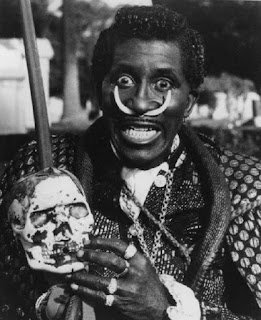Were Hans Christian Andersen writing his tale of The Little Match Girl today, rather than in 1845, then I imagine she'd probably be hawking copies of The Big Issue and wearing a headscarf, rather than selling matches bareheaded and barefoot in the street.
Either way, it's a cold and depressing way to try and earn a living and I can't help feeling sorry for the young woman, called Ana, who stands - rain or shine - outside Boots every day with her magazines and, in the circumstances, a remarkably cheerful manner.
Despite Nietzsche's warnings against the dangers of pity, I often return her greeting or give her a smile. And, although I don't want what she's peddling, I have bought her a hot chocolate and even a tub of Aptamil baby formula, as requested.
And I've done so fully aware that this horrifies many people. Editors at the Daily Mail, for example, seem convinced that The Big Issue is now merely a front for Eastern European criminals; that Britain's homeless and those in genuine need have been replaced by immigrants already in receipt of generous state benefits
Either way, it's a cold and depressing way to try and earn a living and I can't help feeling sorry for the young woman, called Ana, who stands - rain or shine - outside Boots every day with her magazines and, in the circumstances, a remarkably cheerful manner.
Despite Nietzsche's warnings against the dangers of pity, I often return her greeting or give her a smile. And, although I don't want what she's peddling, I have bought her a hot chocolate and even a tub of Aptamil baby formula, as requested.
And I've done so fully aware that this horrifies many people. Editors at the Daily Mail, for example, seem convinced that The Big Issue is now merely a front for Eastern European criminals; that Britain's homeless and those in genuine need have been replaced by immigrants already in receipt of generous state benefits
Maybe that's true: I don't know ...
However, whilst no one wants to be thought of as a soft touch, i.e., open to easy manipulation and emotional blackmail by those who beg on street corners and spin tales of woe, I would hate to become one of those hard-hearted individuals, lacking in compassion or kindness.
So, push comes to shove, I'd rather hand over a fiver just to be on the safe side; even at the risk of being taken for a bit of a mug. In the end, that money secures your own spiritual well-being, rather than their material comfort.
And, in my case at least, it also got me an Xmas card from Ana, who said she will keep me in her prayers and, more importantly, signed herself as my fryend.
Note on the images:
The first is taken from the Disney animated short film The Little Matchgirl (dir. Roger Allers, 2006).
The second is from the inside of my card from Ana - which, although intended to be festive, was actually a card of condolence, expressing the sender's deepest sympathy.
However, whilst no one wants to be thought of as a soft touch, i.e., open to easy manipulation and emotional blackmail by those who beg on street corners and spin tales of woe, I would hate to become one of those hard-hearted individuals, lacking in compassion or kindness.
So, push comes to shove, I'd rather hand over a fiver just to be on the safe side; even at the risk of being taken for a bit of a mug. In the end, that money secures your own spiritual well-being, rather than their material comfort.
And, in my case at least, it also got me an Xmas card from Ana, who said she will keep me in her prayers and, more importantly, signed herself as my fryend.
Note on the images:
The first is taken from the Disney animated short film The Little Matchgirl (dir. Roger Allers, 2006).
The second is from the inside of my card from Ana - which, although intended to be festive, was actually a card of condolence, expressing the sender's deepest sympathy.










